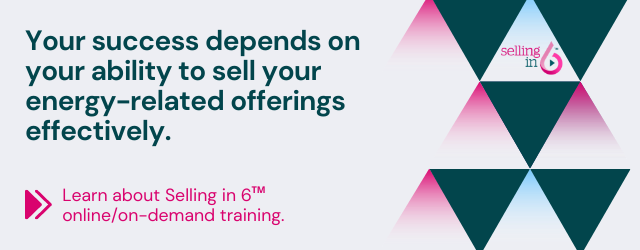One of the keys to successful selling is being able to customize the benefits of your product or service so that they resonate with each and every stakeholder. Different stakeholders are going to be resonating at different frequencies. It’s your job to make sure that you resonate at each and every one of those frequencies at the right time to soft-circle the approval of all of the initiators, influencers, gatekeepers, decision-makers, buyers, and end-users who will ultimately need to say “Yes!” in order to make your proposed project a reality.

In Anthony Parinello's best-selling book, Selling to VITO (The Very Important Top Officer), Parinello addresses the fact that the higher up the corporate ladder you get, the less price matters. In Tony’s words, “Decision-makers make the budget, and non-decision-makers spend the budget.” If you find that price is a barrier, you're probably not high enough in the food chain. If you have a compelling proposition to present to a CEO, price will be less of an issue. In fact, you may have heard me say before that two of the most important questions to answer when addressing a CEO are: “Will what you are offering make the organization easier to manage?” and “Will what you are offering make the enterprise more valuable?” You can be sure that the Board of Directors, which hires the CEO, has those two key performance indicators in mind as it assesses the CEO’s effectiveness over time. Hence, it should come as no surprise that reframing your value proposition to resonate at the frequency of those two metrics should be music to your CEO prospect’s ears.
At the same time, if a decision-maker at any level is unconvinced that you have a viable solution, it doesn't matter if it's free. I was talking to a colleague recently whose company implements “direct install” programs for utilities (i.e., the utility pays 100% of the cost of putting the equipment in). He shared with me that their success rate for direct install was just 70%. So, the next time you think that price is the answer, remember that 30% of this energy professional’s prospects typically say “No!” even though the offer involved zero dollars out of pocket! (In actuality, “cost” is not just the dollars required to do the deal. The time and effort that the prospect must invest in being sold to could actually be a greater “cost” than the “price” of the proposed project.)
I often return to Seth Godin’s hierarchy that non-owners in a B2B environment use to make decisions. If the product or service you’re proposing is perceived to be too risky or inconvenient, if it won’t bring praise or power to the buyer, or if it’s simply not fun to pursue, then the fact that it’s free won’t matter.







